So much of what we buy at Christmas is made to replicate nature. Plastic berries, silk leaves, synthetic trees… Yet we’re surrounded by the real thing every day of our lives. But at Christmas we look for the gold-edged and glitter covered version - and we all know that will eventually just end up in landfill.
We popped up to see Russell at the Dane End Christmas Tree Farm, to find out just how easy it is to do a little bit of foraging and create something just as beautiful… which, at the end of the season just naturally composts back into the ground, leaving virtually no footprint behind.
What can I use as the ring for my wreath?
If you’ve had a wreath professionally made before, then likely you can re-use the base ring again and again.
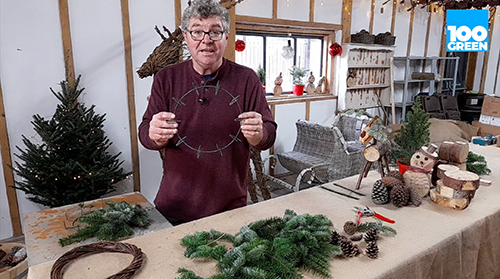
You could buy one from a shop made from willow
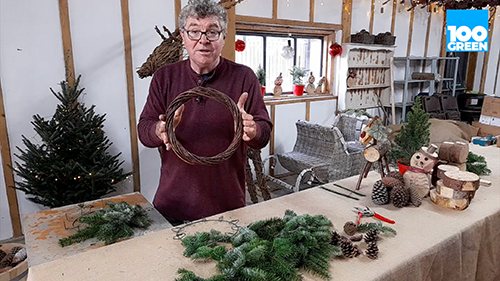
Or the most sustainable thing to do is make your own by using flexible branches from a Hazel tree or a Willow tree.
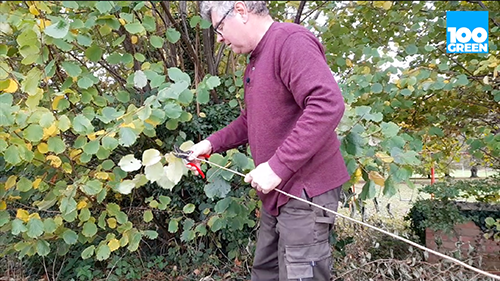
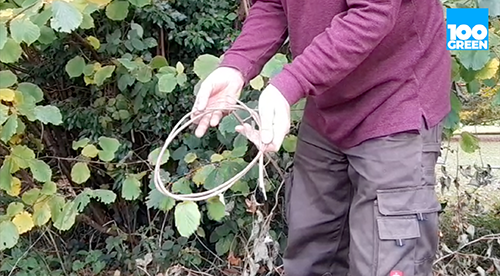
How to use Christmas Tree branches to make a wreath
Christmas tree branches make a brilliant base for your wreath and most Christmas Tree growers will allow you to collect some branches when you come to choose your tree.
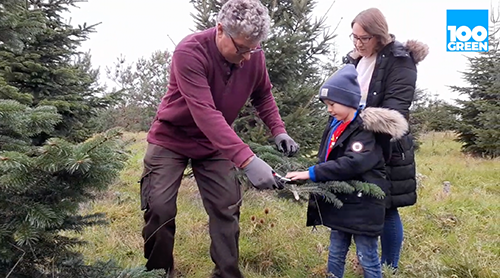
Cut the branches into what resemble ‘bird footprints’. Separate them into piles depending on their rough size. Then layer them up starting with one larger one at the bottom and ending up with a small one on top.
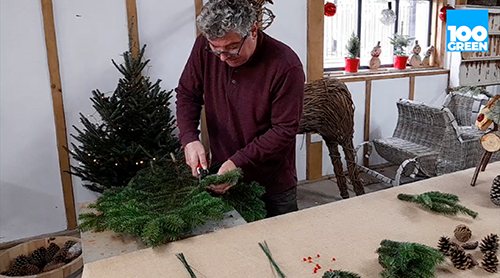
The size of your wreath ring will help determine how many layers you need.
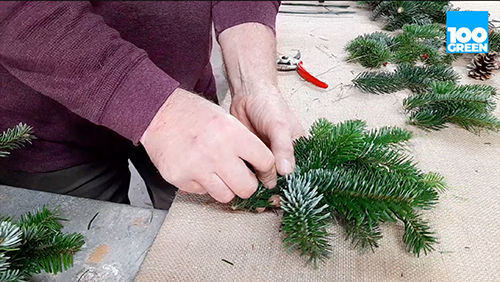
Then working round your ring, attach each bundle using wire or string.
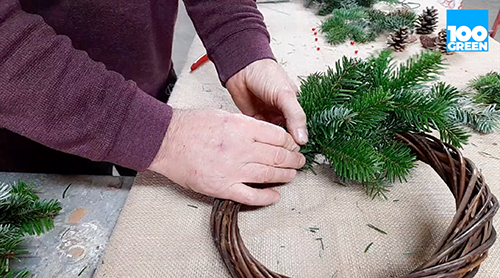
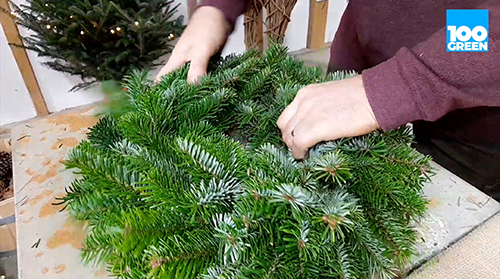
How to forage for natural items for my Christmas Wreath
Make sure you have a nice thick pair of gloves to protect your hands from thorns.
Most things can be found along hedgerows and even in your own garden.
Do make sure, if you spot something beautiful that you aren’t on private property or damaging a plant by taking too much. Just a small snip or two is plenty for one wreath.
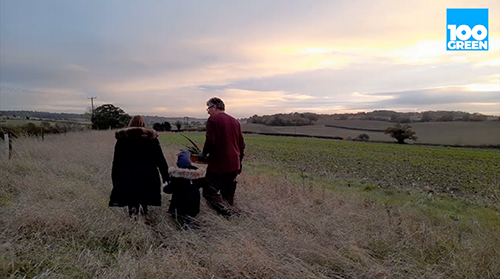
Rosehips can be found at this time of year in many hedgerows. Their red buds add colour to your wreath.
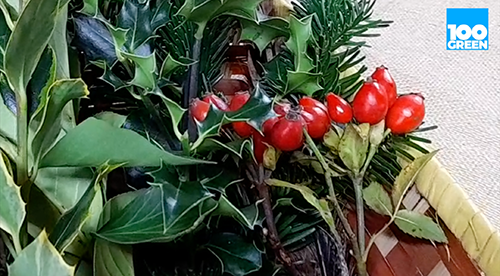
Laurel is a common leaf found in many gardens and it adds a real lush, thickness to your design.
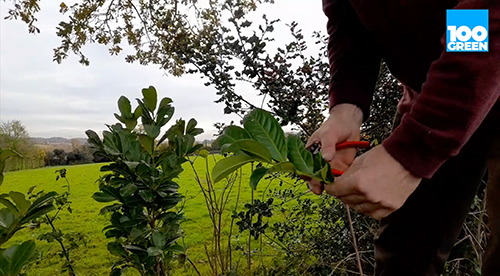
Holly is of course very festive – but has prickles so do be careful.
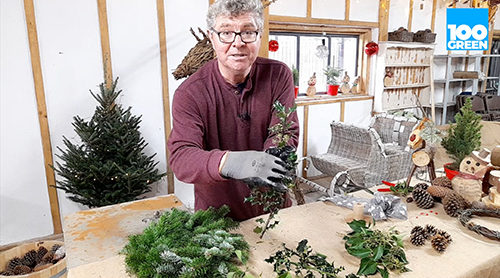
If you can’t find some with berries, you could find some common ivy which has green berries on it. Just grab some nail varnish and paint them red – you can then add them to your holly.
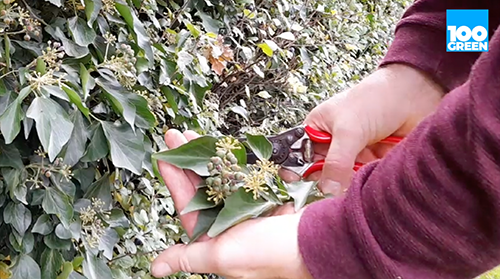
You can collect pinecones very easily on an autumnal walk. Just wrap the wire around the base to poke it through your wreath and attach securely.
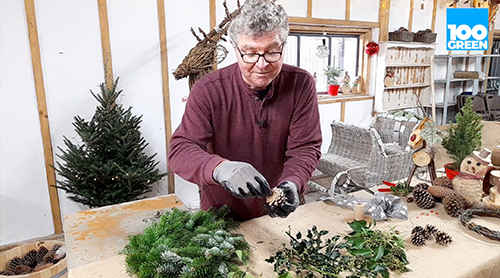
Instead of buying cinnamon sticks… why don’t you just cut down some little twigs and tie them up?
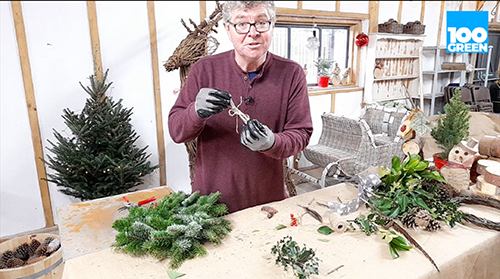
At this time of year, if you are lucky, you can also find pheasant feathers in woodland or caught in gaps under hedgerows.
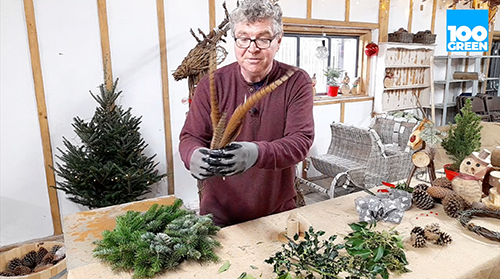
If you can’t find exactly what you are looking for, don’t go and buy it… think creatively. Russell suggested having a rummage through old decorations to see what you can re-use – that’s far better than going to buy new ones.
Decorating your wreath
Then it’s really up to you how you decorate your wreath. Russell’s tips are
1. Follow the flow of the branches round the wreath.
2. Keep your design symmetrical or at least choose a simple pattern you can repeat around it.
3. Use wire or string to poke through the wreath, attaching each items securely.
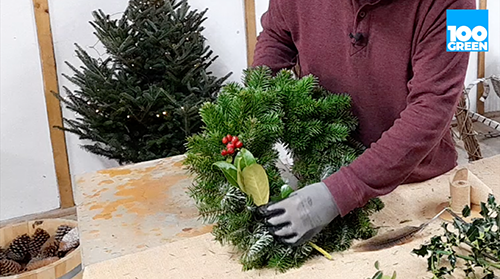
We think you’ll agree that this wreath looks just as beautiful – if not more so - than anything you’ll find in the shops. And after you’re done with it, it can just be composted back into the earth from where it came.
